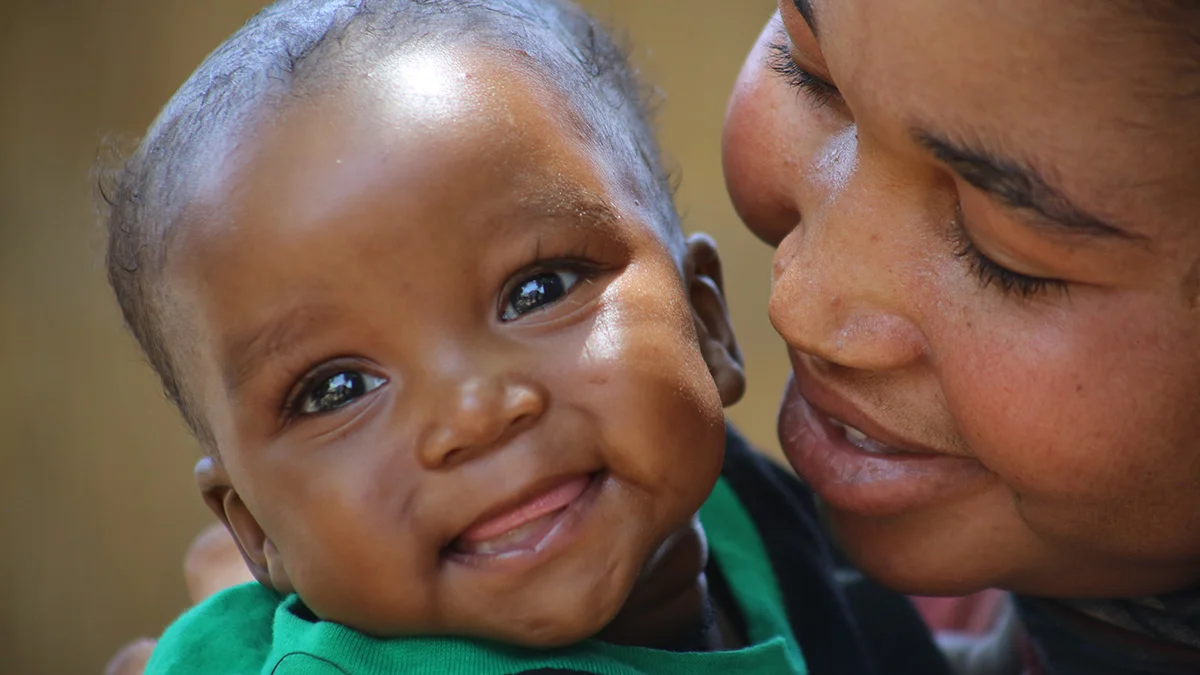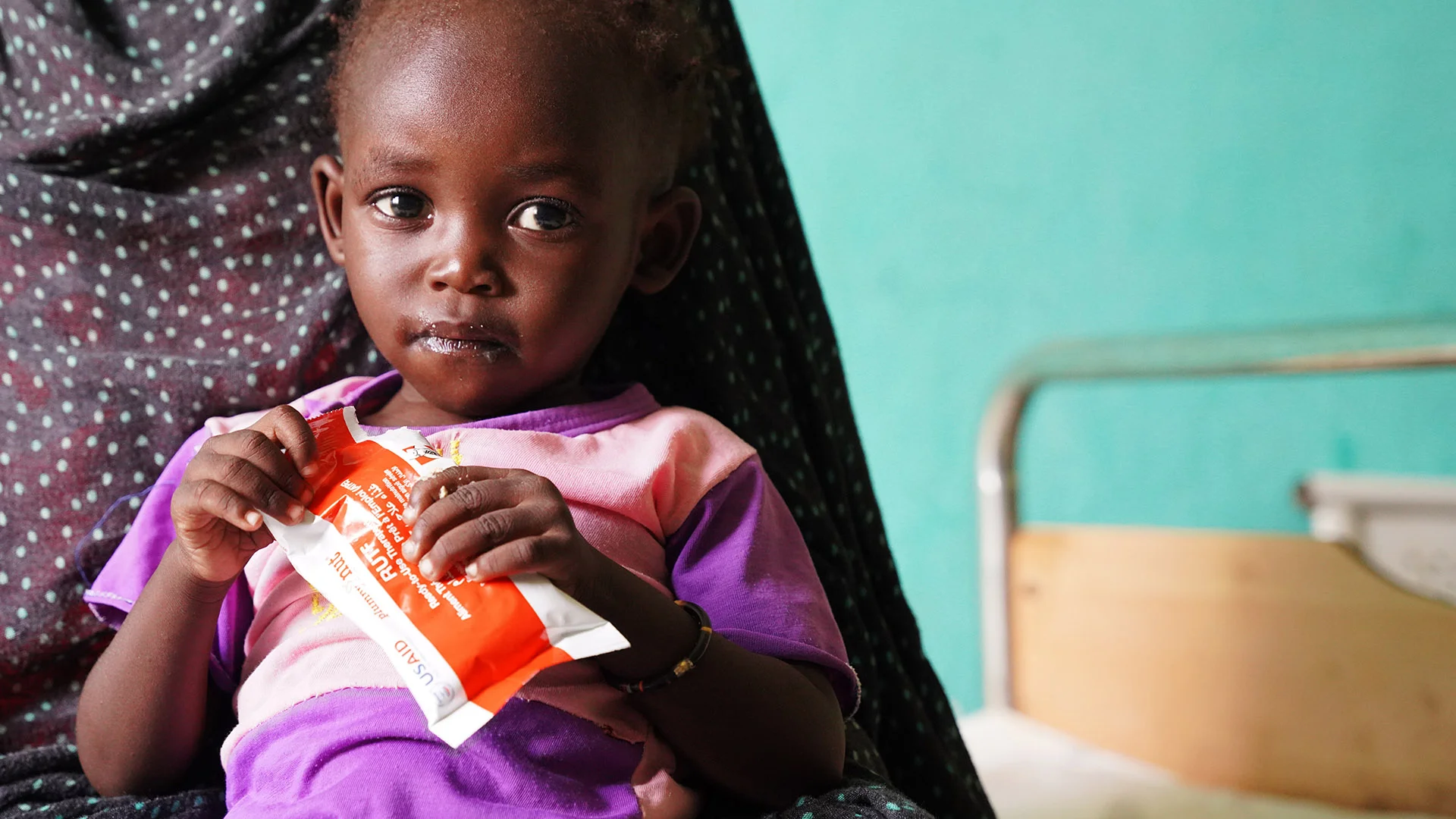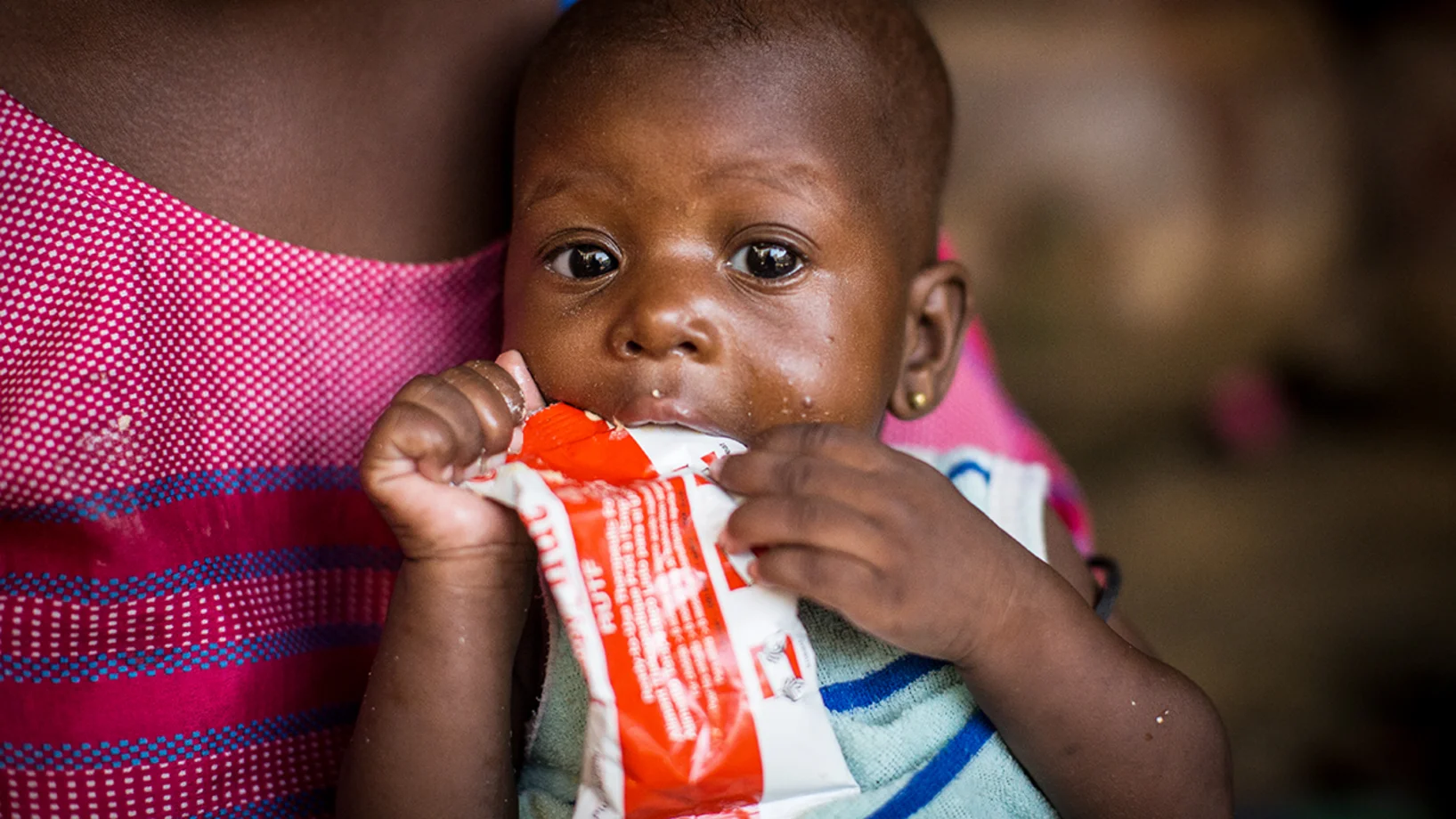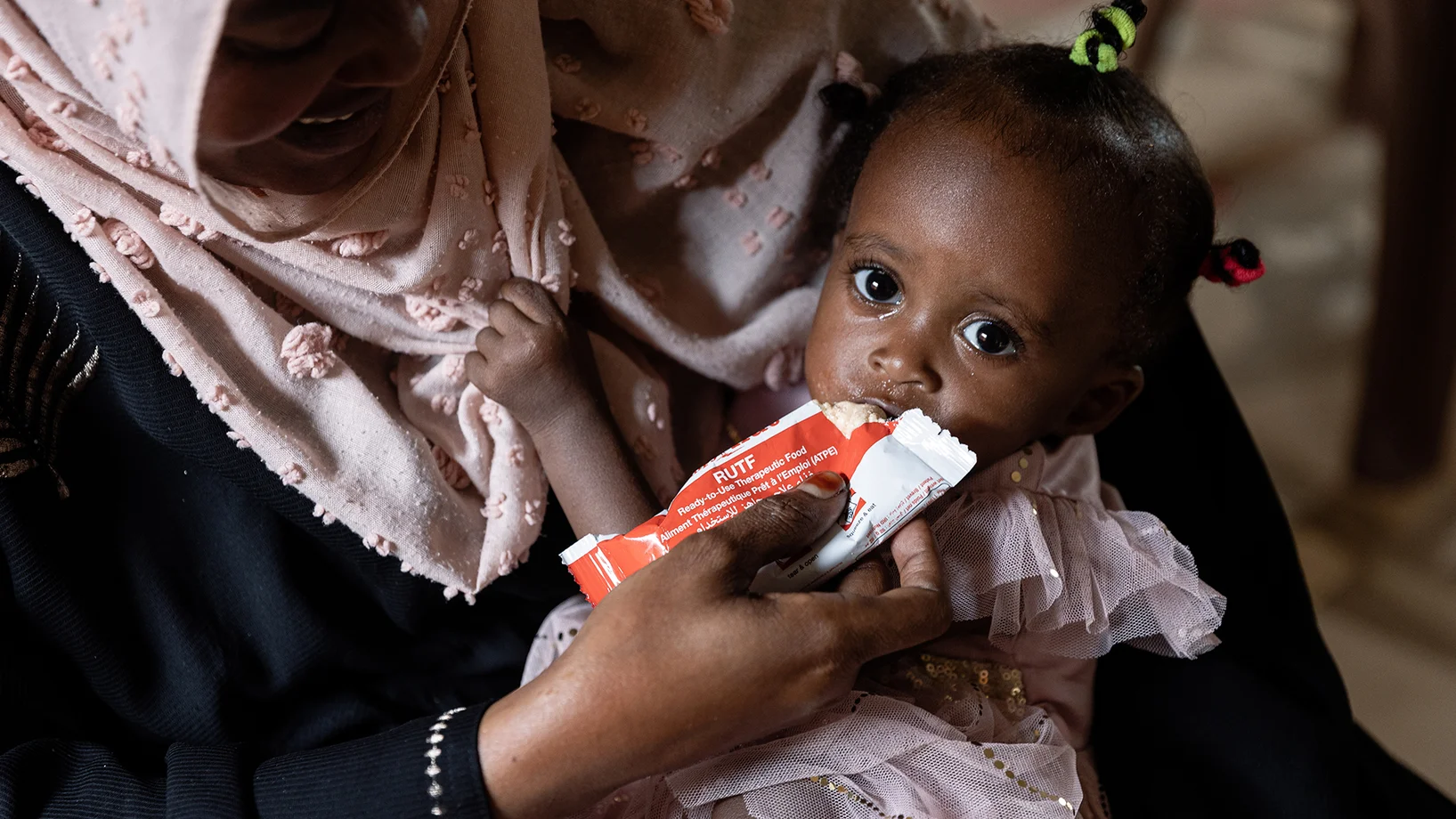Hunger and disease threaten the survival of millions of children around the world. This crisis is being worsened by armed conflicts, displacement, poverty and the effects of climate change.
The situation
Around the world, millions of people are affected by food insecurity. This has grave consequences for child survival and development in particular. One in four children suffers from malnutrition, which increases the risk of contracting life-threatening diseases. The situation is especially critical for 13.6 million acutely malnourished children. Their weakened immune systems make them highly susceptible to infections like pneumonia or diarrhea – which can be fatal without medical treatment.
6,8% of the world’s children
One in two deaths of children
The causes are complex and manifold: armed conflicts, displacement, poverty and rising food prices have exacerbated the situation. In addition, the effects of climate change – droughts, flooding and other climate-related disasters – make it increasingly difficult for families to have access to food and safe water. In many regions, the health systems are overwhelmed or have collapsed, so that sick and malnourished children often don’t get the treatment they urgently need in time. This worsens their chances of survival.
Because of the lethal combination of the lack of health care and inadequate access to enough food, millions of children are caught in a spiral of hunger and disease – and they can’t escape it without help.
A person is food insecure when they lack regular access to enough safe and nutritious food for normal growth, healthy development and a healthy life. This may be the result of food shortages and/or a lack of resources to obtain food. Food insecurity is classified using different levels. According to the World Food Programme, 309 million people in the world experienced acute food insecurity in 2024 (WFP 2024).
IPC Phase 1: None/Minimal: Households in Phase 1 are able to meet their basic food and other needs without resorting to irregular and non-sustainable strategies to procure food and income.
IPC Phase 2: Stressed: A household in Phase 2 has a minimum adequate food intake but cannot cover some essential expenses for non-foods without resorting to stress management strategies.
IPC Phase 3: Crisis: A household in Phase 3 has either gaps in food intake reflecting severe or acute malnutrition; or barely adequate food intake, which can only be managed by exhausting essential resources or through crisis management strategies.
IPC Phase 4: Emergency: A household in Phase 4 has either large gaps in food intake reflecting severe acute malnutrition and excessively high mortality; or the ability to mitigate large gaps in food intake, but only through the use of emergency strategies and the liquidation of assets.
IPC Phase 5: Catastrophe/Famine: A household in Phase 5 experiences an extreme shortage of food and/or cannot meet other basic needs even after exhaustive use of coping strategies. Famine, death, hardship and extreme levels of acute undernourishment are apparent. For the classification as famine, the affected area must exhibit critical levels of acute undernourishment and mortality.
The Integrated Food Security Phase Classification (IPC) defines famine as extreme food shortage. Hunger, death, misery and severe acute malnutrition are present or imminent. Famine is the most extreme form of food insecurity.
Famine in Sudan
The situation is especially devastating in Sudan, where 25.6 million people are suffering from acute hunger. Droughts and the conflict in North Darfur, which has been going on for over a year, have brought famine to the region. The 400,000 displaced families in the Zamzam camp have been particularly affected – and the situation is getting worse. Almost four million children in Sudan are malnourished, with 730,000 suffering from acute malnutrition. Families in Sudan lack food, safe water and medicines, and half of the population is struggling to find enough food to eat.
Despite the dangerous security situation throughout the country, UNICEF is working to help children and their families in Sudan by providing medical supplies, safe drinking water, lifesaving food and medicines.

How your donation helps
UNICEF works 24/7 in countries like Sudan and is committed to ensuring sick and malnourished children have access to medical assistance – even in dangerous and remote regions. These aid measures are crucial for the survival of children. They include:
- treatment of malnourished children with therapeutic milk and therapeutic food,
- essential health care and medicines,
- training for health workers,
- access to safe drinking water,
- counseling and support for families to ensure that children receive healthy food.



